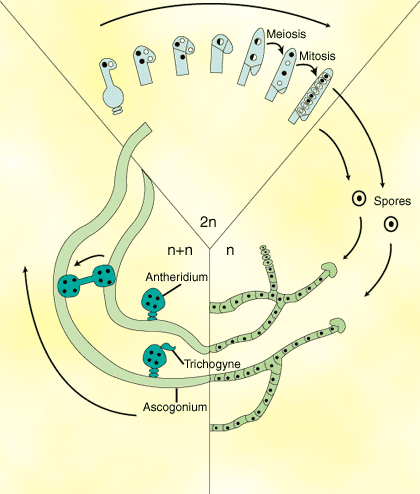Please wait while we process your payment
If you don't see it, please check your spam folder. Sometimes it can end up there.
If you don't see it, please check your spam folder. Sometimes it can end up there.
Please wait while we process your payment

By signing up you agree to our terms and privacy policy.
Don’t have an account? Subscribe now
Create Your Account
Sign up for your FREE 7-day trial
By signing up you agree to our terms and privacy policy.
Already have an account? Log in
Your Email
Choose Your Plan
Individual
Group Discount
Save over 50% with a SparkNotes PLUS Annual Plan!
 payment page
payment page
Purchasing SparkNotes PLUS for a group?
Get Annual Plans at a discount when you buy 2 or more!
Price
$24.99 $18.74 /subscription + tax
Subtotal $37.48 + tax
Save 25% on 2-49 accounts
Save 30% on 50-99 accounts
Want 100 or more? Contact us for a customized plan.
 payment page
payment page
Your Plan
Payment Details
Payment Summary
SparkNotes Plus
You'll be billed after your free trial ends.
7-Day Free Trial
Not Applicable
Renews May 8, 2025 May 1, 2025
Discounts (applied to next billing)
DUE NOW
US $0.00
SNPLUSROCKS20 | 20% Discount
This is not a valid promo code.
Discount Code (one code per order)
SparkNotes PLUS Annual Plan - Group Discount
Qty: 00
SparkNotes Plus subscription is $4.99/month or $24.99/year as selected above. The free trial period is the first 7 days of your subscription. TO CANCEL YOUR SUBSCRIPTION AND AVOID BEING CHARGED, YOU MUST CANCEL BEFORE THE END OF THE FREE TRIAL PERIOD. You may cancel your subscription on your Subscription and Billing page or contact Customer Support at custserv@bn.com. Your subscription will continue automatically once the free trial period is over. Free trial is available to new customers only.
Choose Your Plan
This site is protected by reCAPTCHA and the Google Privacy Policy and Terms of Service apply.
For the next 7 days, you'll have access to awesome PLUS stuff like AP English test prep, No Fear Shakespeare translations and audio, a note-taking tool, personalized dashboard, & much more!
You’ve successfully purchased a group discount. Your group members can use the joining link below to redeem their group membership. You'll also receive an email with the link.
Members will be prompted to log in or create an account to redeem their group membership.
Thanks for creating a SparkNotes account! Continue to start your free trial.
We're sorry, we could not create your account. SparkNotes PLUS is not available in your country. See what countries we’re in.
There was an error creating your account. Please check your payment details and try again.
Please wait while we process your payment

Your PLUS subscription has expired
Please wait while we process your payment
Please wait while we process your payment

Ascomycota
The Ascomycota are morphologically diverse. The group includes organisms from unicellular yeasts to complex cup fungi. There are 2000 identified genera and 30,000 species of Ascomycota. The unifying characteristic among these diverse groups is the presence of a reproductive structure known as the ascus, though in some cases it has a reduced role in the life cycle. As a group, they are economically important. Many are tree diseases, such as dutch elm disease and apple blights. The yeasts are used to produce alcoholic beverages and breads. The mold Penacillium is used to produce the anit-biotic penicillin.
Like basidiomycota, most ascomycota sprout from spores into hapliod mycelia. These mycelia can produce two types of reproductive structures. First, they can produce conidiophores for asexual reproduction. Conidiaphores may simply branch off from the mycelia or they may be formed in fruiting bodies. Secondly, ascomycota produce structures for sexual reproduction called gametangia. These structures are either male or female. The male gametangia may be anything from a detached cell (called a spermatium) to a differentiated region called an antheridium. The female structure is always a differentiated region known as the ascogonium. Many Ascomycota form a fruiting body, or ascoma, similar to that of the Basidiomycota, but with an important difference. The ascomycota fruiting body is composed mainly of entangled monokaryotic hyphae from the male and female mycelia rather than of dikaryotic hyphae formed from the joining of hyphae from the two mycelia, as in the basidiomycota. The only dikaryotic structures in the fruiting body are those produced by the gametangia after plasmogamy.

The exceptions to the above discussion of structure are the unicellular ascomycota or yeasts. These organisms are non-motile single cells with chitinous cell walls that earn them classification as fungi. Though they mainly reproduce by budding and fission, yeasts also engage in sexual reproduction that results in the production of an ascus, placing them in the Ascomycota. Most varieties of yeast do not form multicellular filiments like the mycelia and hyphae of other fungi, though they do live in massive groupings called colonies.
Like all fungi, Ascomycota can undergo both asexual and sexual reproduction.
Asexual reproduction among the different groups of fungi are very similar. Like Basidiomycota, Ascomycota reproduce asexually through budding or the formation of conidia.

Sexual reproduction in the Ascomycota differs from that in the Basidiomycota and Zygomycota because Ascomycota have male and female gametangia in their haploid stage. These structures, discussed in Heading , form on the mycelia. Plasmogamy, or the transfer of cytoplasm and nuclei, takes place when a part of the ascogonium, the trichogyne, fuses with the antheridium. This produces a binucleate, dikaryotic condition in the ascogonium. This phase is prolonged and a series of dikaryotic cells called an ascogonius hypha is produced. At the tip of this hypha, karyogamy or nuclear fussion takes place, resulting in the formation of a diploid ascus. Within this structure, the diploid nucleus undergoes meiosis, producing four haploid nuclei. These nuclei then undergo mitosis to form eight haploid ascospores. Notice that this is twice as many spores as produced in the basidium.
Please wait while we process your payment

